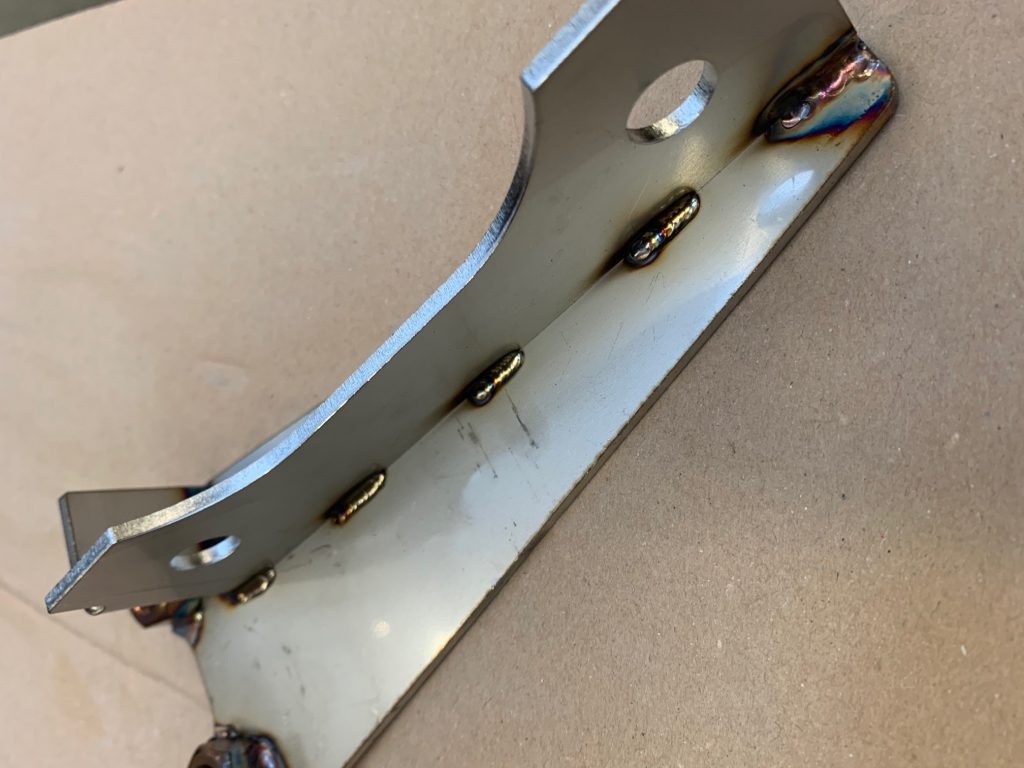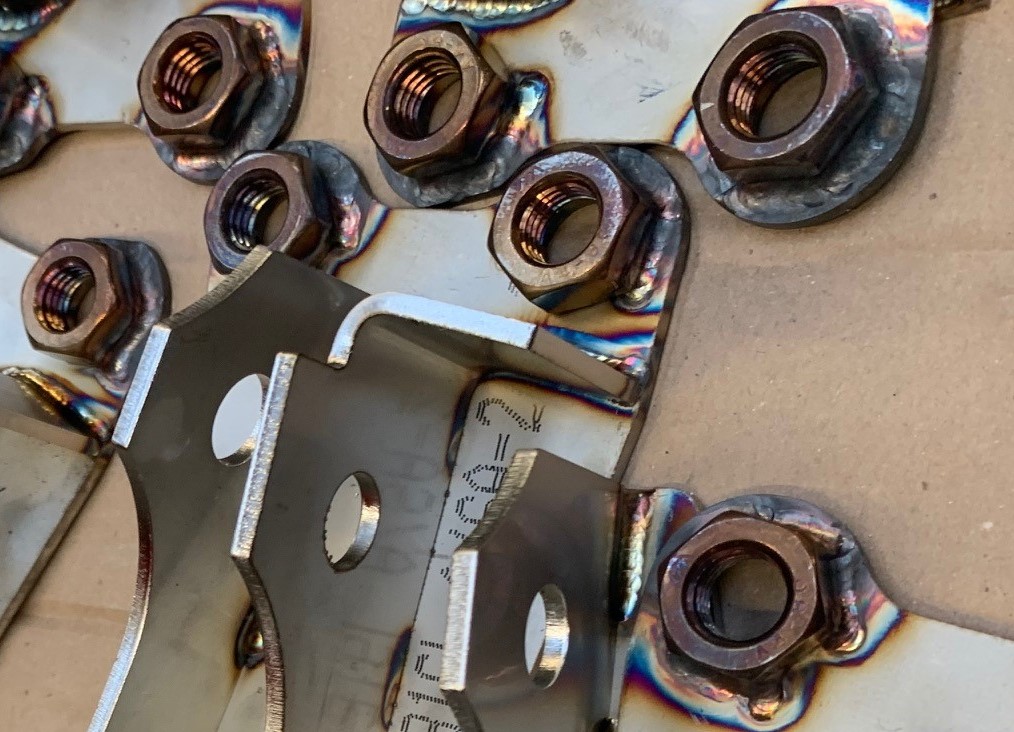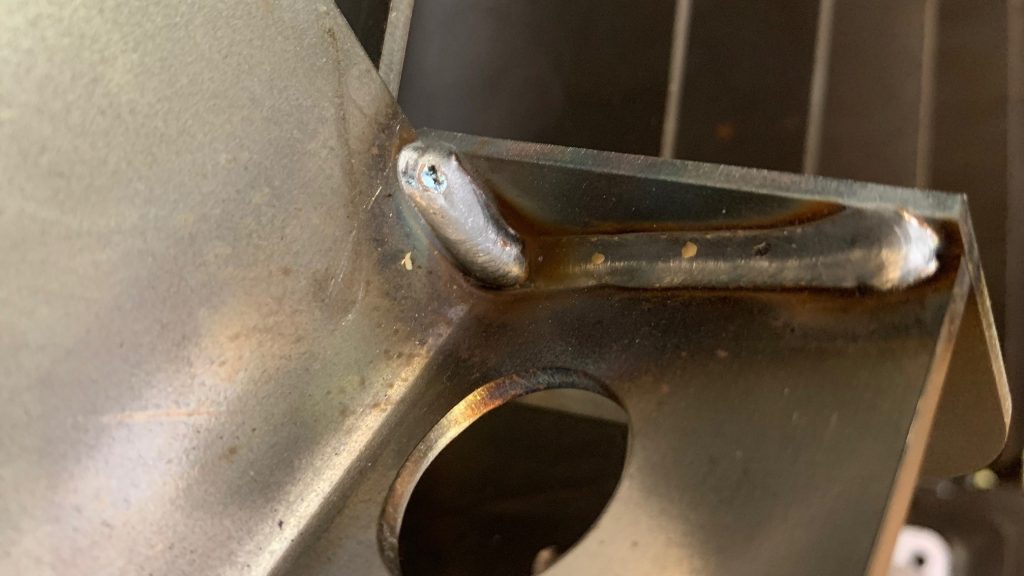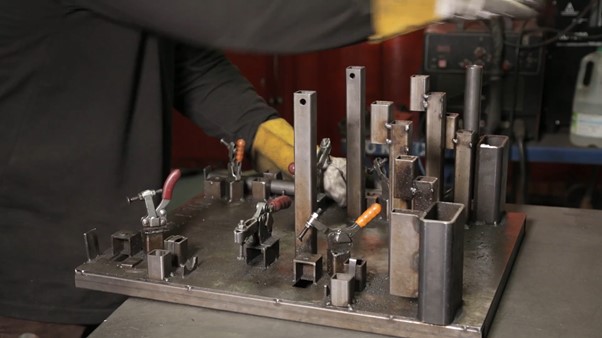
Welding: your technical questions answered
What creates welding sparks? What does MIG and TIG stand for? If you have ever wondered, read on, we have the answers!

MIG welding – joining perpendicular metal plates 
MIG welding – attaching fixings to metal plate
What is welding?
Welding is a metal fabrication technique for joining two or more pieces of metal together. The welding process uses intense electrical heat to slightly melt the metal pieces, and sometimes a ‘filler’ material too. When the join cools and solidifies, the metal pieces are fused together.
What can welding be used for?
Welding is a versatile process with many applications. At Aldermans we have welded everything from very small precision automotive components to large-scale luxury yacht fittings. We have a highly skilled team, and they always relish a new challenge!
How is welding different from soldering and brazing?
With soldering and brazing, only the filler material melts – the metal pieces themselves don’t. However, with welding the temperature is much higher and the edges of the metal pieces melt slightly too, so the join is much stronger.
Which metals can be welded?
We can weld aluminium, mild steel and stainless steel.
How does the welding process work?
Welding uses the energy of an electric arc to create heat. To create the arc, an electrical charge is passed down an electrode wire, which is briefly placed in contact with the metal work pieces to create a circuit, then pulled slightly away. This proximity creates the arc – and the sparks! The intense heat melts the electrode wire, which then acts as the filler material. The welding gun emits a ‘shielding gas’, which stops the join from reacting with chemicals in the atmosphere while it cools, which would otherwise cause weakening or damage.
What different types of welding are there?
MIG welding
MIG stands for Metal Inert Gas, which refers to the type of shielding gas used in the welding gun. With MIG welding the electrode wire is fed automatically through the welding gun, which makes the process simpler and faster than TIG welding. This means production times and costs are reduced.

TIG welding
TIG stands for Tungsten Inert Gas. With TIG welding, the electrode inside the welding torch is made of tungsten, hence the name – but unlike MIG welding, it doesn’t melt and become the filler. Instead, the welder feeds a separate filler wire manually. Hence TIG welding requires far more skill and excellent hand-eye co-ordination. The resulting join is much smaller, neater and less visible, but the process takes longer and is more costly.
Stud welding
Stud welding is used to join fasteners (such as screws or rivets) to sheet metal. It also uses an electric arc but is performed with a special stud welding gun. This holds the fastener in place and creates a tiny arc, just sufficient to fix the stud or screw to the metal plate neatly, without the need for a filler material.
Spot welding
Spot welding uses a different process called resistance welding. It is used when joining two flat metal plates together, one on top of the other. The two plates are aligned before an electrical charge is applied at opposite points on the top and the underside. The electrical resistance between the electrodes causes heat, which fuses the plates together.
How do you choose the right type of welding for a job?
It will often come down to the material and the aesthetic requirements, as well as the cost and required timescale.
MIG welding is easier, faster and cheaper, but because it uses a filler material there will be a visible, ridged join – albeit a neat one, as our team is highly skilled! MIG welding is also better suited to thicker materials. If the join isn’t going to be seen in the finished product, or aesthetics are less important, then MIG welding will be a high quality and economical choice.
TIG welding is better suited to thinner materials, as thin as 0.6mm. If the join is going to be on the visible side of the finished product, then TIG is a better choice. However, it is more costly and time consuming because of the skill involved.
Spot welding and stud welding have specific applications, as noted above.
For the neatest of finishes, we offer brazing. Melted filler material is allowed to naturally fill the gap between two metal items, to make a virtually seamless finish – especially if polished afterwards.
How accurate are welded joins?
We can weld to tolerances from +/-1mm to +/-0.2mm depending on the application, which provides exceptional quality and repeatability. We also create welding jigs (pictured below) for larger batches. This ensures pieces are accurately lined up every time and improves speed and consistency between pieces.

To find out more or to receive a quote for your next welding project, get in touch with our team today.
